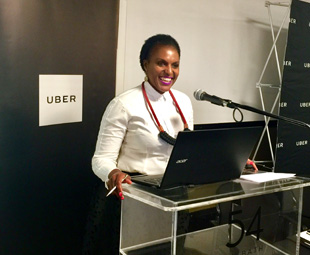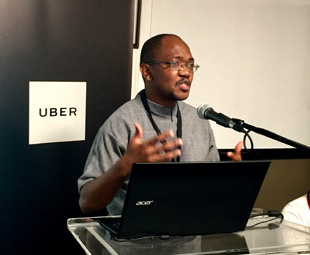Uber launches traffic data website

Uber is a surprising and enterprising company. In the middle of the furore surrounding the non-renewal of its operating licence in London, the company has announced the launch of Uber Movement, a website that will help urban planners do their jobs a whole lot better.
That’s because planning can only be spot-on when information and data is readily available – and that’s precisely what Uber Movement provides.
Available free of charge (users just log in using their Uber-registered email address), Uber Movement gathers its data from the billions of trips that riders have taken with Uber, aggregated into zones covering the standard boundaries used by urban planners.
This will enable planners to evaluate where investments in transportation infrastructure should be made in their cities. Better planning should translate into better infrastructure (fingers crossed!)
 All three major cities in Gauteng (Johannesburg, Ekurhuleni and Tshwane) are part of Uber Movement and data pertaining to these cities is now available.
All three major cities in Gauteng (Johannesburg, Ekurhuleni and Tshwane) are part of Uber Movement and data pertaining to these cities is now available.
While the website is primarily aimed at urban planners, it is useful to the man (or woman) in the street, too. Want to know how long it will take to get from point A in Johannesburg to point B in Tshwane, on a certain day of the week, at a certain time of the day? Uber Movement will give an extremely realistic travel time projection.
Speaking at the launch of Uber Movement, Yolisa Kani, head of public policy at Uber South Africa, said that data pertaining to travel time is as valuable as crude oil.
“Uber Movement is the next step to connecting further with our cities and having the opportunity to recognise their great transportation needs. With Uber Movement, we can further our mission of creating reliable transportation everywhere, for everyone,” she pointed out.
 Uber Movement has the support of the Council for Scientific and Industrial Research (CSIR). “Transport planning is a data-intensive undertaking, and the required datasets tend to be expensive to collect and process,” said the CSIR’s Mathetha Mokonyama, at the official launch.
Uber Movement has the support of the Council for Scientific and Industrial Research (CSIR). “Transport planning is a data-intensive undertaking, and the required datasets tend to be expensive to collect and process,” said the CSIR’s Mathetha Mokonyama, at the official launch.
“Having a platform that serves as a full-day transport network sensor would certainly help with the monitoring of some of the pertinent network indicators,” he added.
Over time, Uber will be adding more information – for example, automatically detecting potholes and telematics data. The former feature could, of course, contribute to road safety – which is something we would all welcome.
Want to know more? You can watch a video here.
Published by
Focus on Transport
focusmagsa




